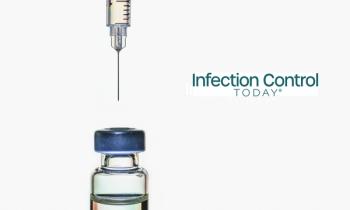
FDA Recognizes Vaporized Hydrogen Peroxide (VHP) as Established Sterilization Method for Medical Devices
FDA designates vaporized hydrogen peroxide (VHP) as an Established Category A sterilization method, reducing reliance on Ethylene Oxide. Boosting innovation for safer, effective medical device sterilization.
In an announcement on January 8, 2024, the US Food and Drug Administration (FDA) officially designated vaporized hydrogen peroxide (VHP) as an established sterilization method for medical devices. This move recognizes VHP's extensive history of safety and effectiveness. The FDA's decision marks a significant step forward in diversifying sterilization practices in the medical device industry, aiming to reduce reliance on ethylene oxide (EtO) and fortify the medical device supply chain's resilience.
The
“Vaporized hydrogen peroxide (VHP) has been recognized by the FDA as an established method of sterilization for medical devices, given its long history of safety and effectiveness,” Maureen Spencer, MEd, BSN, RN, CIC, FAPIC, infection preventionist consultant, told Infection Control Today about the announcement. “The FDA has revised the final guidance, Submission and Review of Sterility Information in Premarket Notification (510 (k)) Submissions for Devices Labeled as Sterile, to list VHP as an example of an Established Category A method of sterilization. This update is expected to facilitate broader adoption of VHP as a sterilization method for the medical device industry and is part of the agency’s multi-pronged approach to reducing the use of EtO where possible and further supports the agency’s efforts to advance medical device supply chain resiliency.”
Effective sterilization is paramount for ensuring the safety of
Ethylene oxide has traditionally been the most widely used sterilization method for medical devices in the United States, with over 20 billion devices annually undergoing EtO sterilization, constituting roughly 50% of devices requiring this process. Since 2019, the FDA has been actively promoting the exploration and development of alternatives to EtO, launching various programs and initiatives to foster innovation in medical device sterilization.
Including VHP as an established sterilization method is a pivotal development in the FDA's ongoing efforts to reduce dependence on EtO. Suzanne Schwartz, MD, MBA, the director of the Office of Strategic Partnerships and Technology Innovation in the FDA's Center for Devices and Radiological Health, emphasized the agency's commitment to protecting public health in the complex medical device landscape. She highlighted VHP's addition as a significant step in building a more resilient supply chain for sterilized devices, contributing to the prevention of potential shortages.
Established Category A sterilization methods are those with a long-standing record of safe and effective use on medical devices are categorized as. This includes moist heat, dry heat, EtO, and radiation. With the recent FDA recognition of the
As sterilization technologies continue to advance, the FDA states in the press release that it remains “committed to reducing adverse impacts to the environment and public health and to developing solutions that avert potential shortages of devices that the American public relies upon.“ This announcement signals a new era in medical device sterilization, one that prioritizes health, innovation, and sustainability.
Newsletter
Stay prepared and protected with Infection Control Today's newsletter, delivering essential updates, best practices, and expert insights for infection preventionists.




